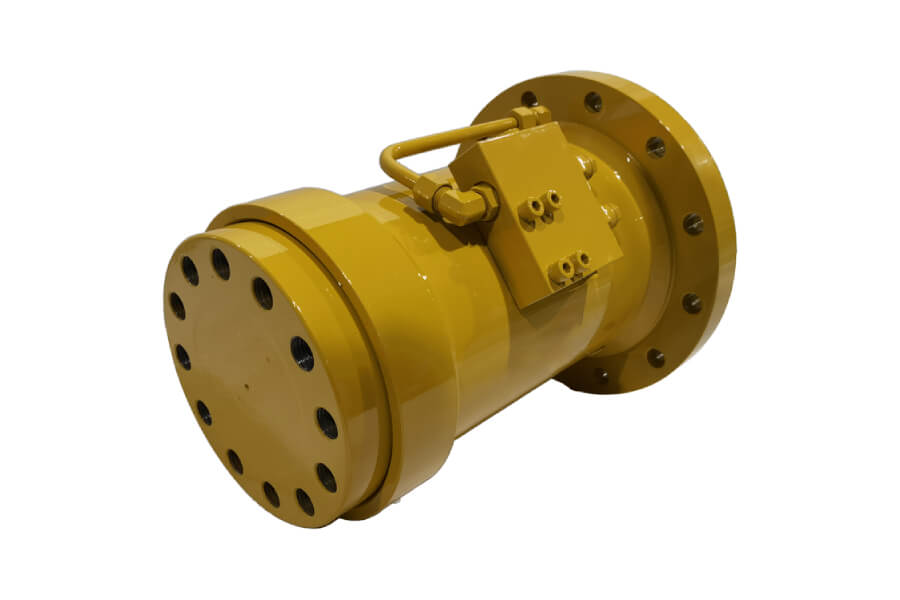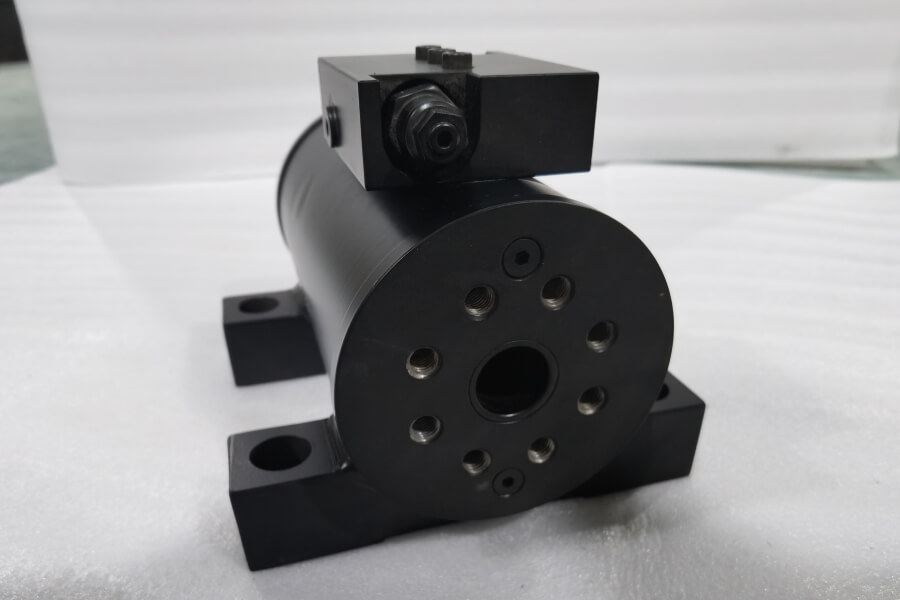As a key component in mechanical equipment, the stability and reliability of the performance of the high torque hydraulic rotary actuator directly affect the operating efficiency and service life of the entire mechanical system. Therefore, when using the hydraulic rotary actuator, a series of precautions must be strictly followed to ensure that it works normally, safely, and efficiently. The following is a detailed explanation of the precautions for the use of the hydraulic rotary actuator, aiming to provide users with comprehensive guidance and reference.
I. Preparation and inspection before installation
1. Familiarity with drawings and technical requirements
Before using the hydraulic rotary actuator, the user should first carefully read and familiarize himself with the relevant drawings and technical requirements. This includes the model, specifications, installation dimensions, working parameters, etc. of the actuator to ensure that the selected actuator can meet the actual work needs. At the same time, the user should also understand the working principle, performance characteristics, and possible troubleshooting methods of the actuator so that he can quickly respond to potential problems during use.
2. Cleaning of the working surface and the surface of the actuator
Before installation, the working surface and the surface of the hydraulic rotary actuator must be thoroughly cleaned. This includes removing impurities such as oil, dust, rust, etc. on the surface to ensure that the actuator can fit the working surface tightly after installation and reduce leakage problems caused by poor contact. During the cleaning process, a soft cloth or a special cleaning tool should be used, and tools with sharp edges should be avoided to avoid scratching the surface of the actuator.
3. Selection and inspection of hydraulic oil
The cleanliness and performance of the hydraulic oil have a vital impact on the working effect of the hydraulic rotary actuator. Therefore, before installation, the user should ensure that the cleanliness of the selected hydraulic oil meets the specified standards and meets the working requirements of the actuator. At the same time, the viscosity, oxidation resistance, wear resistance and other performance indicators of the hydraulic oil should also be checked to ensure that it can meet the lubrication and sealing requirements of the actuator.
II. Precautions during installation
1. Strictly follow the installation drawing
When installing the hydraulic rotary actuator, the user should strictly follow the installation drawing. This includes determining the installation position, installation angle, connection method, etc. of the actuator to ensure that the actuator can work normally after installation. During the installation process, ensure that the bolts and pipes are tightly connected without leakage, and avoid over-tightening the bolts to cause damage.
2. Prevent dirt from entering the actuator
During the installation process, the user should pay special attention to prevent dirt from entering the hydraulic rotary actuator. This includes keeping the working environment clean during disassembly, cleaning, and installation, and using clean tools and accessories for operation. At the same time, after the installation is completed, the actuator should also be checked for sealing to ensure that no leakage occurs.
3. Adjustment and calibration of the rotary actuator
After the installation is completed, the user should adjust and calibrate the hydraulic rotary actuator. This includes checking whether the rotation direction of the actuator is correct, whether the rotation is smooth, and whether the seal is good. At the same time, the stroke of the actuator should also be adjusted and calibrated to ensure that it can meet the actual work needs. During the adjustment process, the user should use special tools and instruments for operation and follow the relevant operating procedures and safety requirements.
III. Precautions during use
1. Control system temperature
During use, the user should pay close attention to the temperature changes in the hydraulic system. Excessive oil temperature will accelerate the oxidation and deterioration of the hydraulic oil, reduce the service life of the seal, and even cause permanent deformation or failure of the seal. Therefore, users should take measures to control the oil temperature within the specified range, such as using cooling equipment such as coolers and radiators to reduce the oil temperature; regularly checking and replacing the hydraulic oil filter; reasonably controlling the working pressure and flow of the oil pump, etc.
2. Regularly check and replace hydraulic oil
Users should regularly check the condition of the hydraulic oil and replace it with new hydraulic oil in time. This includes checking whether the performance indicators such as cleanliness, viscosity, color, etc. of the hydraulic oil meet the requirements; checking whether the hydraulic oil contains impurities, moisture, and other pollutants; checking whether the oxidation degree and acid value of the hydraulic oil exceed the standard, etc. Once the hydraulic oil is found to be deteriorated or seriously contaminated, the new hydraulic oil should be replaced in time and the system filter and other components should be cleaned to ensure the cleanliness and normal operation of the system.
3. Protect the piston rod and seals
The piston rod and seal of the hydraulic rotary actuator are some of the parts that are easily damaged. Therefore, during use, users should pay attention to protecting the outer surface of the piston rod to prevent damage to the seal from bumps and scratches; at the same time, they should also frequently clean the dirt such as mud and sand on the dust ring of the dynamic seal of the actuator and the exposed piston rod to ensure good sealing effect and extend the service life of the seal.
4. Regular test runs and inspections
To ensure the normal operation of the hydraulic rotary actuator and to detect potential problems in time, users should conduct regular test runs and inspections. This includes a full extension and retraction test run before each use to exhaust the air in the system and preheat the systems; regular inspection of the connection parts to see if they are loose and tighten them to prevent leakage; regular inspection of the actuator’s rotation direction to see if it is correct and adjust the calibration to ensure that it meets the work requirements, etc.
IV. Maintenance and care
1. Regular replacement of seals
Seals are one of the parts in the hydraulic rotary actuator that are prone to wear and damage. Therefore, users should regularly check the condition of the seals and replace new seals as needed to ensure good sealing performance of the actuator and prevent leakage. When replacing seals, attention should be paid to selecting seals of the same specifications and materials as the original seals to ensure their compatibility and reliability.
2. Cleaning and maintenance of the system
To maintain the cleanliness and normal operation of the hydraulic system, users should regularly clean and maintain the system. This includes cleaning the oil tank, oil pipe, filter, and other components to remove impurities and pollutants; replacing new hydraulic oil and cleaning system filters and other components to ensure the cleanliness and normal operation of the system; checking and adjusting system parameters such as pressure and flow to ensure that they meet work requirements, etc.
3. Pay attention to the use environment
The use environment of the hydraulic rotary actuator has an important impact on its performance and life. Therefore, users should pay attention to avoid exposing the actuator to harsh environments such as high temperature, humidity, corrosive gases, etc. during use; at the same time, they should also avoid exposing the actuator to strong direct sunlight to prevent its surface temperature from being too high and affecting its normal operation and service life.
4. Establish a complete maintenance and maintenance system
To ensure the long-term stable operation of the hydraulic rotary actuator and extend its service life, users should establish a complete maintenance and maintenance system. This includes formulating detailed maintenance and maintenance plans and operating procedures; regularly inspecting and maintaining the actuator and recording relevant data and conditions; promptly discovering and handling potential problems to prevent them from developing into serious failures or accidents, etc.
In summary
Precautions for the use of hydraulic rotary actuators involve multiple aspects, including preparation and inspection before installation, precautions during installation, precautions during use, and maintenance and care. Only by strictly abiding by these precautions and taking effective measures for maintenance and care can the normal operation of the hydraulic rotary actuator be ensured and its service life extended, thus providing a strong guarantee for the stable operation of mechanical equipment.



